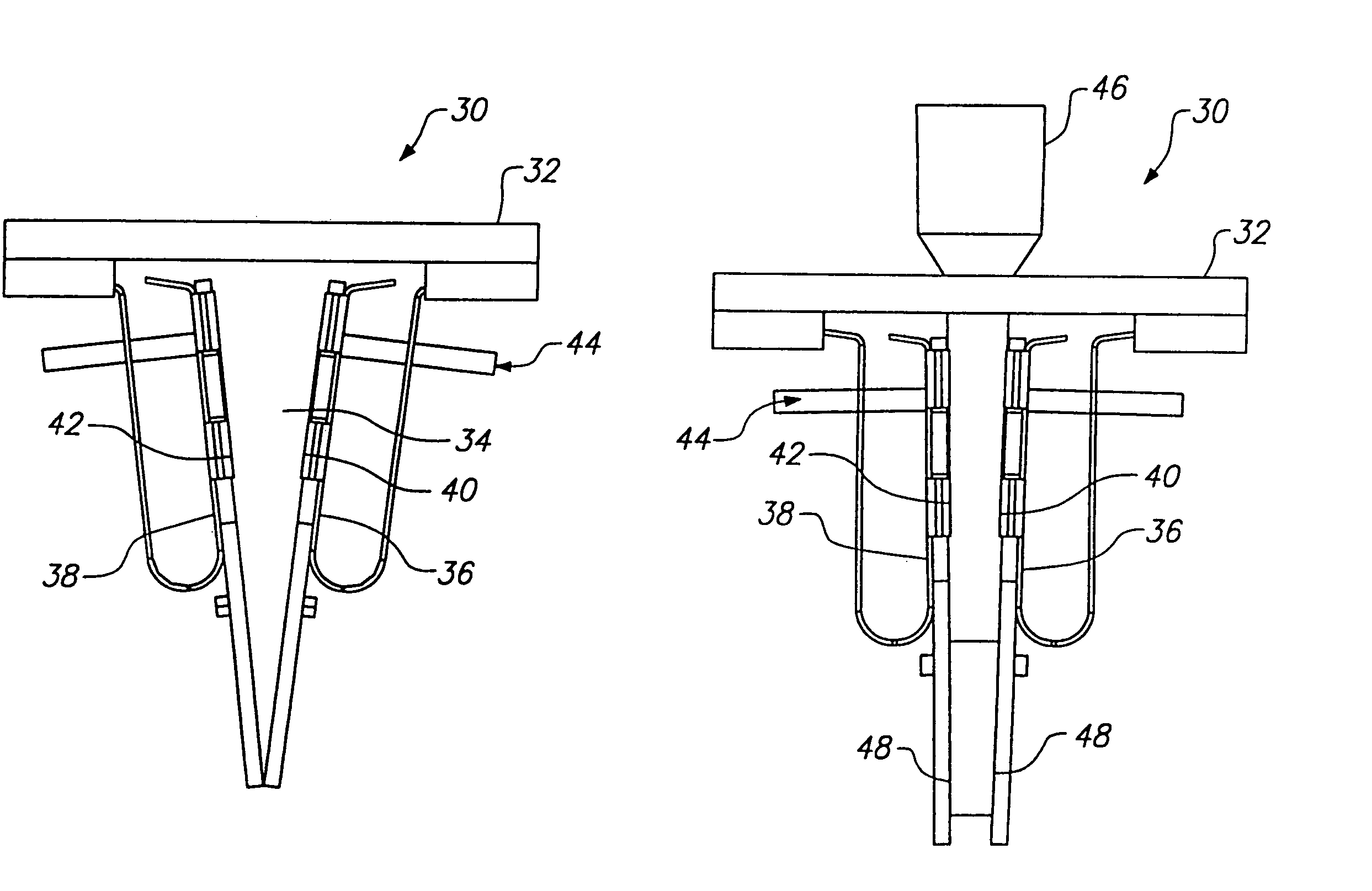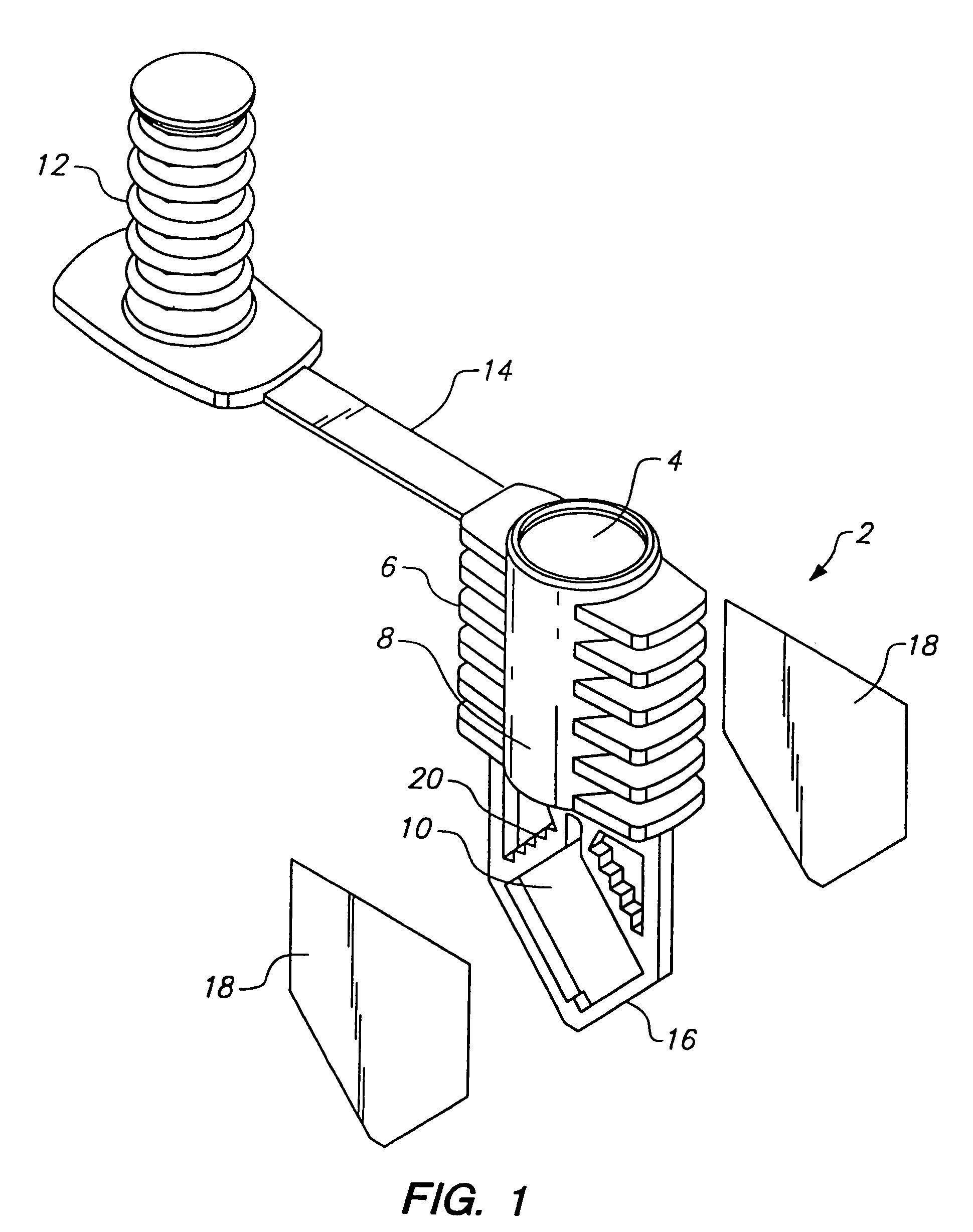Thermal cycler with optical detector
a technology of optical detector and cycler, which is applied in the direction of biomass after-treatment, process and machine control, fluorescence/phosphorescence, etc., can solve the problems of large thermal mass, long processing time, and inability to achieve temperature uniformity, and achieve efficient optical viewing of samples. , the effect of optimal thermal transfer
- Summary
- Abstract
- Description
- Claims
- Application Information
AI Technical Summary
Benefits of technology
Problems solved by technology
Method used
Image
Examples
Embodiment Construction
[0034]In general, this invention provides a low thermal mass heating and cooling assembly for the rapid heating and cooling of chemical solutions to perform reactions and for the efficient detection of the reaction products. The low thermal mass of the system ensures rapid heating and cooling rates since there is little material to heat and cool and because there is a high surface to volume ratio for thermal transfer. Those skilled in the art have only recently appreciated that rapid heating and cooling improves efficiency and decreases the amount of extraneous undesirable reactions, and that certain reactions could be performed with high thermal exchange rates.
[0035]The objectives of the invention are to greatly increase thermal exchange rates in chemical processes, such as PCR (up to 10× faster heating and cooling rates), to optimize temperature uniformity of the reactants, to accommodate high thermal expansion coefficients to minimize thermal-induced mechanical stress; maximize o...
PUM
| Property | Measurement | Unit |
|---|---|---|
| angle | aaaaa | aaaaa |
| temperature | aaaaa | aaaaa |
| temperatures | aaaaa | aaaaa |
Abstract
Description
Claims
Application Information
 Login to View More
Login to View More - R&D
- Intellectual Property
- Life Sciences
- Materials
- Tech Scout
- Unparalleled Data Quality
- Higher Quality Content
- 60% Fewer Hallucinations
Browse by: Latest US Patents, China's latest patents, Technical Efficacy Thesaurus, Application Domain, Technology Topic, Popular Technical Reports.
© 2025 PatSnap. All rights reserved.Legal|Privacy policy|Modern Slavery Act Transparency Statement|Sitemap|About US| Contact US: help@patsnap.com



